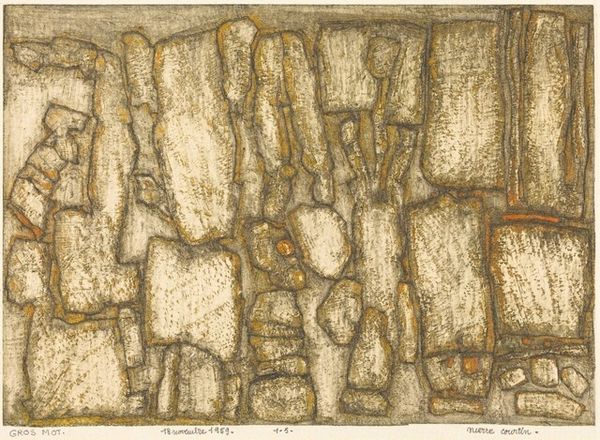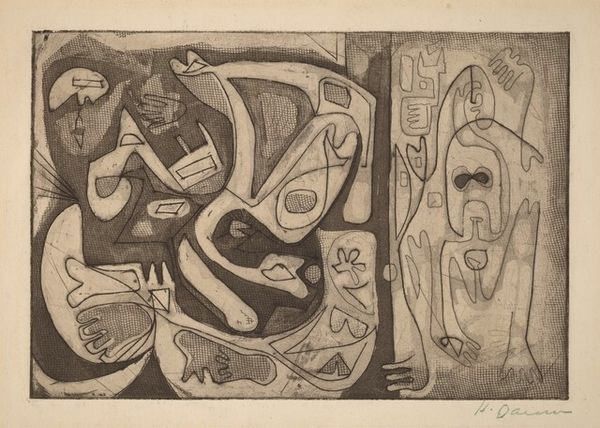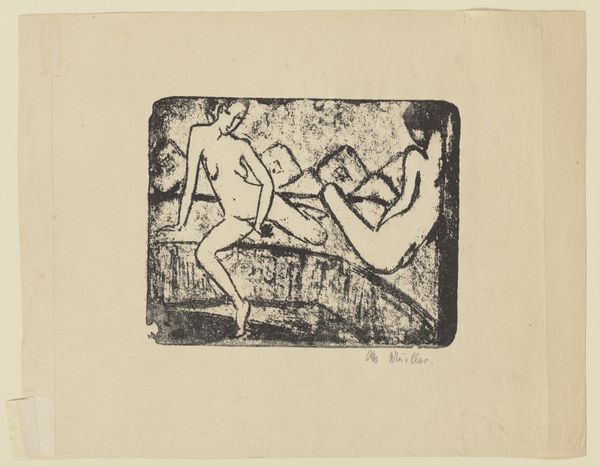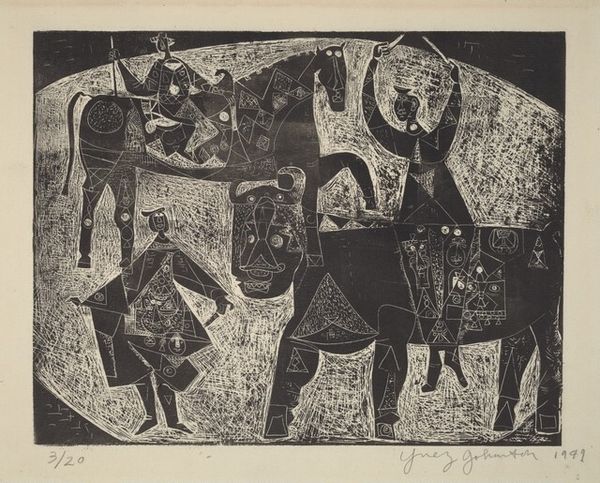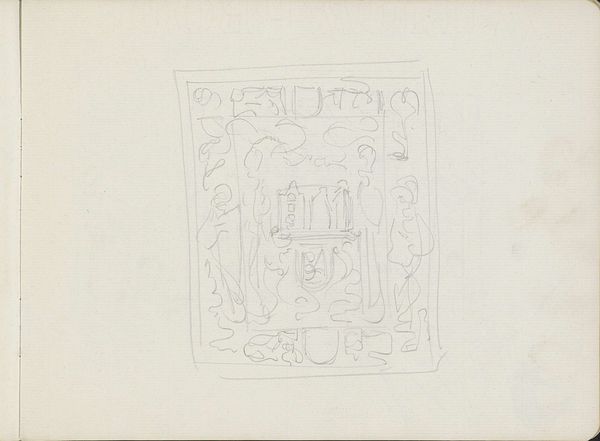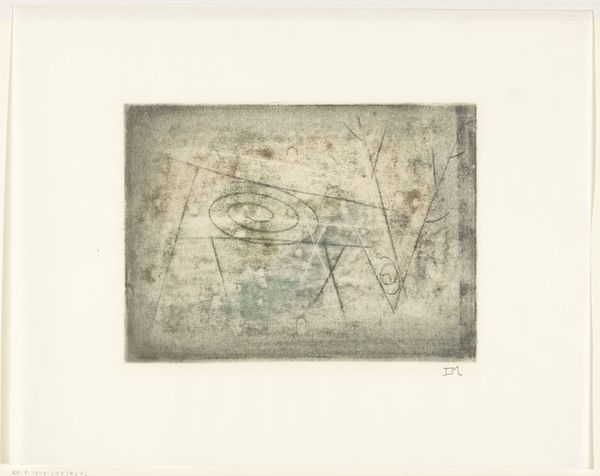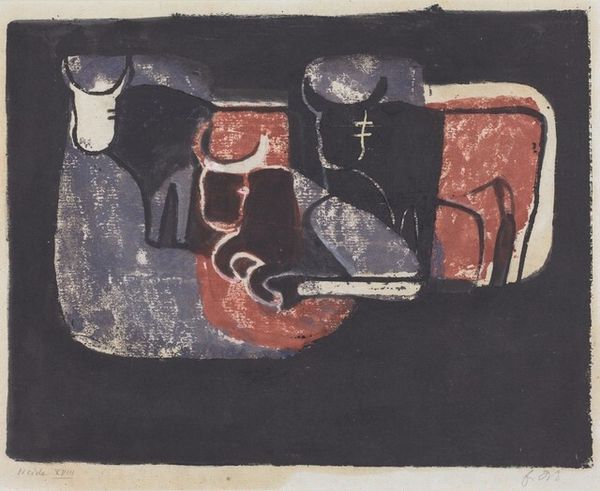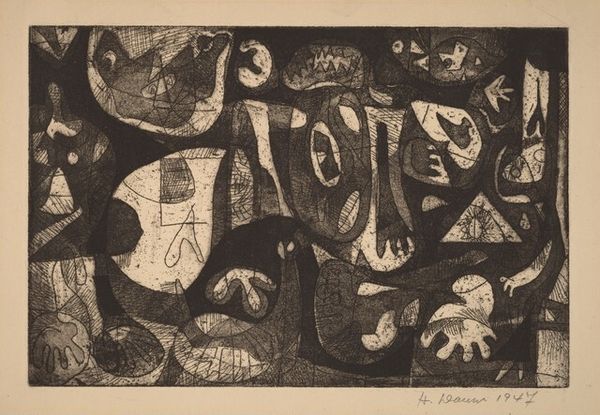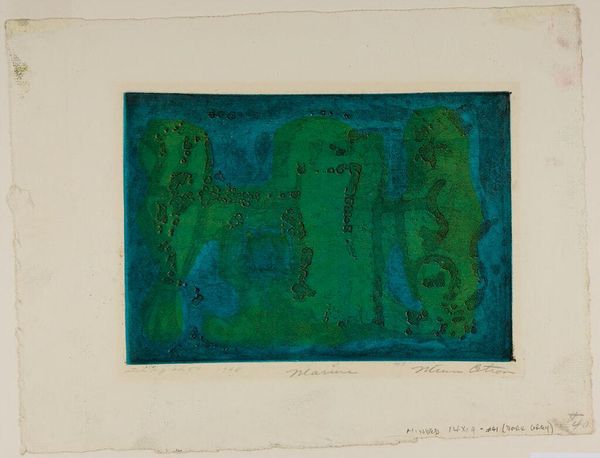
graphic-art, print, etching
#
abstract-expressionism
#
graphic-art
#
abstract painting
# print
#
etching
#
form
#
line
Copyright: National Gallery of Art: CC0 1.0
Curator: This is Minna Citron's "Marine," created in 1948. It’s an etching, showcasing Citron's experimentation with graphic arts. Editor: It gives me this submerged feeling, almost like looking at a shipwreck through murky water. A bit ghostly, really. Curator: Indeed. Citron frequently worked with archetypes, drawing from what Jung called the "collective unconscious." Notice how these forms—while abstract— evoke a primal, aquatic realm. Editor: Right. But what's interesting to me is the era. Post-war, artists grappled with trauma. Are these marine shapes also referencing the instability and displacement of that period? Are those fragmented forms alluding to destruction and the struggle for rebuilding? Curator: It’s entirely possible. Consider also the symbolic weight of water. Across cultures, it represents cleansing, but also chaos. Etchings themselves are made by exposing plates to acid baths, right? Is she perhaps referencing those transformative—or even destructive—processes through this print? Editor: Precisely! This visual language aligns with many female artists from that period, finding subtle ways to challenge the status quo or to reveal some internal truths. You see abstraction employed in so many ways that often reflected personal narratives but coded ones, of course, to navigate those decades' politics. Curator: Absolutely. Even the limited color palette – the blues and muted greens – adds to this sense of something ancient and profound, reflecting collective memory. It evokes timeless symbols and imagery. Editor: And I wonder if Citron might be hinting at our shared vulnerability, our fragile relationship to both the natural and the human-made worlds, now and in the future. It prompts considerations of how destruction becomes a catalyst for both renewal and displacement, and art as one means of bearing witness. Curator: Thank you. It’s remarkable how a few lines can conjure such powerful meanings and reflect our human condition. Editor: Indeed, offering subtle pathways to explore those themes.
Comments
No comments
Be the first to comment and join the conversation on the ultimate creative platform.
